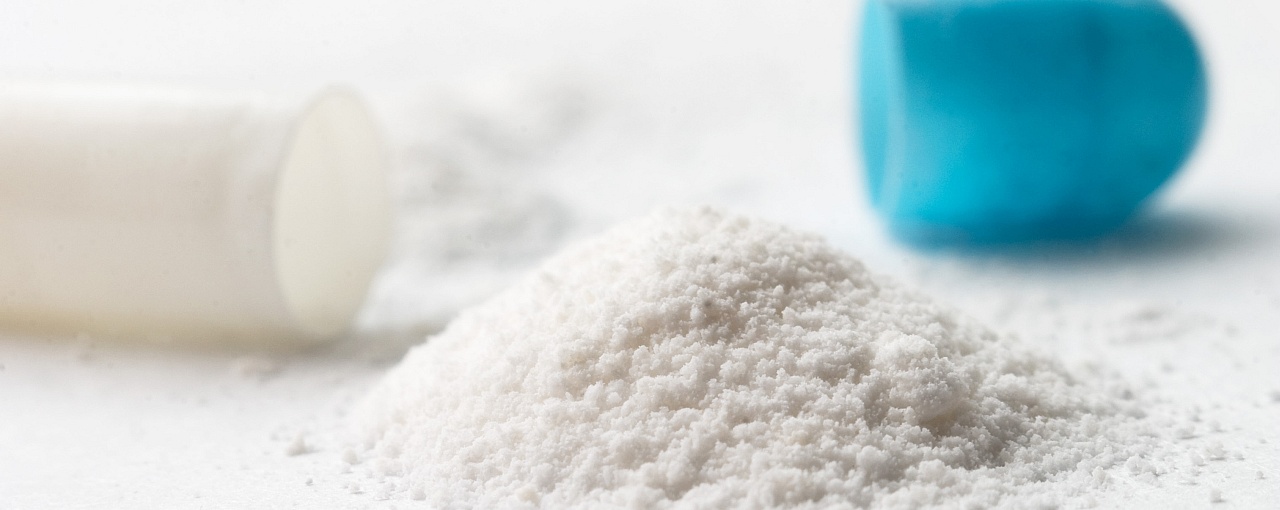Table of Contents
Introduction

A powder is a homogenous mixture of more or less finely divided particulate material in dry form. Although the use of powders as an SDF has declined yet they are the starting material in the manufacture of many dosage forms. Powders are one of the oldest dosage forms and are used both internally and externally. They impart flexibility (with regard to a wide selection of drugs, combination and dosage ranges), stability (drugs like aspirin and penicillin are more stable in powdered form than in solution), rapid therapeutic effect (rapid attainment of therapeutic blood levels and rapid absorption from finely divided powders due to large specific surface area), and ease of administration to all categories of patients. However, the preparation of powders is not a suitable dosage form for unpleasant-tasting, hygroscopic and deliquescent drugs.
Advantages

1. Powders are more physically and chemically stable when compared to the liquid dosage form.
2. The drug product in the powder dosage forms is less prone to microbial contamination.
3. It is an ease mode of drug administration when the dose is very large.
4. It is well accepted by pediatric and geriatric patients.
5. The rate of dissolution and absorption is faster in powder dosage form when compared to any
other SDF.
Disadvantages

1. Powders are bulky dosage form and causes difficulty in handling and transport.
2. They are not easily transferrable from a container and may spill.
3. The method of preparation and packaging is time-consuming.
4. Drug substances that are having an unpleasant taste are not suitable to administer in powder form.
5. The substances that are hygroscopic, deliquescent, volatile, and oxygen-sensitive are not suitable to be administered in powder form
Classification of Powders

The classification of powders is as follows:
1. Aerosol powders:
Medicated powders that are taken or administered by inhalation with the help of a dry powder inhaler are aerosol powders. The products delivered by this route are intended for the treatment of asthma or bronchial disorders. The particle diameters, which are delivered by this route, are in the range of 1–6 μm. These products also contain inert propellants and pharmaceutical diluents to protect the powder from humidity, to aid in flow property and for the metering uniformity.
2. Bulk powders
Medication in bulk powder forms is limited to non-potent substances. Examples of powders taken in the bulk forms are medicated topical anti-infectives such as polymyxin B sulfate, tolnaftate, etc., douche powders for vaginal use such as Massengill powder, reconstituted antacid preparation such as sodium bicarbonate, laxative such as psyllium, etc.
3. Divided powders
These are properly blended by using geometric dilution method and then based on the amount to be taken at a single time are divided as single dosing units. The divided powders are packed in small piece of paper folded to enclose the medication. Examples: Powdered laxatives, douche powder and analgesic powders.
4. Effervescent powders
These powders when mixed with water shows effervescence with the liberation of carbon-di-oxide. The effervescence also helps in masking the bitter taste of active ingredients. The usual content of these powders are sodium bicarbonate, organic or inorganic acids such as citric acid, tartaric acid, etc.
5. Explosive powders
Substances such as an oxidizing agent and reducing agent when triturated in a mortar and pestle there are chances of explosion, which may occur due to the heat generation and may lead to serious consequences. To handle such type of powders each ingredient should be separately triturated and lightly mixed without applying any pressure. Alternatively the powders can be individually triturated and can be separately packed and dispensed with suitable directions to the patient regarding its use.
6. Medicated powders for internal use:
These powders are available to be used both internally and externally. Internally used powders are added in water or directly taken internally. Internal medicated powders can also be inhaled for both local such as analgesics and systemic use such as laxatives. Medicated powders taken systemically will have faster rate of dissolution and absorption when compared to any other SDFs. These powders are also available in reconstituted form.
7. Insufflations
These powders are usually applied with an applicator known as insufflators. Insufflations are finely divided powder form introduced into different body cavities such as nose, ear, vagina, tooth sockets, etc. When the insufflator is compressed, a current of air distributes the powder particles in a stream of gas through the nozzle into the delivery site. Uniform dose delivery may not be obtained by insufflations.
8. Dusting powders
Dusting powders are used externally for local application, not intended for systemic action. The desirable characteristics of dusting powders are non-irritability, homogeneity, free flow, good spreadability and covering capability, the fine state of subdivision, and capacity to protect the skin from chafing and irritation caused by friction, moisture, and chemical irritants. The formulation usually contains substances such as kaolin, talc, zinc oxide, starch, and boric acid.
These powders are micronized by passing through sieves #85 or 120. It should be preferably dispensed in sifter-top containers. Such containers provide protection from air, moisture, and contamination as well as convenience of application. It should contain a label as “FOR EXTERNAL USE ONLY.” The categories of drugs dispensed are lubricants, protectives, adsorbents, antiseptics, antipruritics, astringents, and antiperspirants.
Dusting powders can be classified into the following two types:
(a) Medicated dusting powders: These are the bulk SDFs, which are intended to be applied
on the intact skin for local action.
(b) Surgical dusting powders: These are the bulk SDF, which are intended to be applied into
the deep layers of the skin. These preparations need to be sterile as it comes in contact with
open wounds and deep layers of the skin.
9. Dentifrices
Dentifrices are bulk powders for external use to clean teeth. They mainly contain an abrasive agent such as precipitated calcium carbonate or hydrous dibasic calcium phosphate. It also contains a surfactant, mild soap or detergent and sweetening agents.
10. Douche powders
These powders are most commonly used for vaginal use and intended for the action of cleansing agents or used as an antiseptic. They may also be used for nasal or ophthalmic route. The main criteria for these preparations are to ensure complete mixing and to maintain the micronized particle size by passing through sieve.
Preparation of Powders

1. Trituration
In this method, particle size reduction of coarse granular substances or lumps is carried out using a mortar and pestle or mill. Sometimes even dry powder substances are mixed using this method.
2. Pulverization:
Soft and gummy substances are difficult to powder in mortar and pestle. Such substances are powdered by adding an inert material that helps in powdering and are removed afterward. A typical example is a camphor, which is powdered by moistening in presence of alcohol and after the preparation, alcohol is allowed to evaporate.
3. Levigation
In this method, a solvent is added to the dry powder to form a paste. The solvent is known as the levigating agent. The powder-solvent paste is then triturated using mortar and pestle. In the preparation of semi-solid dermatological preparations, ophthalmic ointments, and suspensions, this method is used, which prevents the gritty feeling in these formulations. A typical example of a levigating agent is liquid Paraffin.
4. Spatulation
In this method, the powders are blended in small amount by movement of a spatula on an ointment tile or on a small sheet of paper. The process is only suitable for small quantities of powder. Powders having potent substances or with a large quantity are not blended by this method, because the process does not ascertain a homogenous blending. Solid substances that form eutectic mixtures are suitable for blending with spatulation because compacting of the powders results from these. Examples of substances that can be blended by this method are— camphor, menthol, phenol, thymol, aspirin, etc.
5. Tumbling
Special motorized powder blenders are used in this process, whereby the powder is mixed by tumbling in a rotating chamber. The process is time consuming.
6. Sifter mixing
Powders are mixed by passing through sifters, which results in light and fluffy products. The process is not suitable for the incorporation of potent drugs into a powder mix.
Incorporation of Ingredients into powders
In the preparation of powders, some special modifications are followed for incorporation of some of the substances. The modified procedures are as follows:
1. Hygroscopic and deliquescent powders
Substances such as sodium bromide, zinc chloride, etc., have strong affinity to absorb moisture from the atmosphere. When the moisture absorption crosses the limits, these substances even liquefy. Such substances are usually used in the granular form rather than powder form to expose the lower surface area to the atmosphere. These types of powders should be double wrapped.
2. Volatile substances
Agents containing volatile oils undergoes volatilization in the atmosphere upon incorporation in the powder. The examples of such agents are camphor, menthol, etc. These agents should be packed by double wrapping with an inner waxed paper and outer bond paper cover by using heat sealed plastic bags.
3. Eutectic powders
Substances having low melting point when triturated and mixed together will form a powder blend with low melting point as compared to individual melting points and whose temperature would be less than the room temperature and hence liquify. Examples ofeutectic substances are thymol, menthol, camphor, phenol, aspirin, etc. The components of these powders should be dispensed separately with directions like powder of each kind should be
taken as a dose. Another alternative method is by addition of double the proportion of an inert high melting point diluent such as magnesium carbonate, light magnesium oxide, kaolin or talc, etc., and mixing together with the eutectic substances without applying pressure.
4. Efflorescent powders
Crystalline substances, which liberate water of crystallization when present, cause a powder to liquefy. Examples of these substances are citric acid, ferrous sulfate, caffeine, etc. Employment of anhydrous salt of these substances is a remedy.
5. Liquids
Incorporation of liquids into a powder substance is done by trituration of the liquid (small concentration) with an equal volume of powder and then addition of the remaining powder in several portions with trituration.







